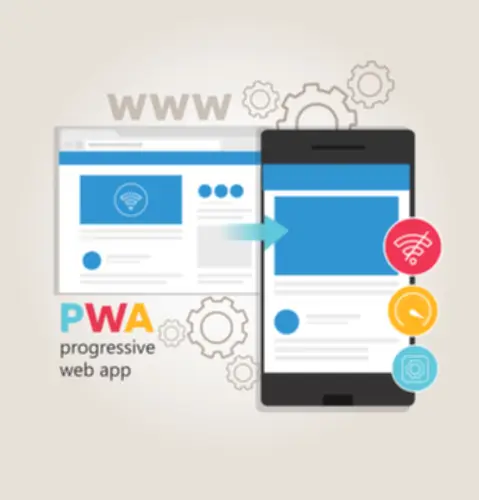DevOps augmented by cloud know-how enables you to construct highly scalable and versatile purposes utilizing totally different architectures similar to Microservices, serverless structure devops structure, and cloud structure. Continuous Integration and Continuous Deployment (CI/CD) sits on the heart of DevOps. This pipeline includes integrated processes required to automate build, test, and deployment. In the Build section, a compilation of the application takes place utilizing a version management system. Here, the construct is validated based on the organizational compliance necessities.
Synthetic Intelligence Technology Stack
In the check phase, the code is examined, and the Release phase delivers the applying to the repository. In the deployment phase, the application is deployed to the required platforms. In DevOps, the rigorously crafted plans, bureaucracy, and wide-reaching releases of traditional software growth make means for practices that enable ongoing, collaborative enchancment.
Structure Repos And Version Control Within A Project
This strategic alignment enhances collaboration, effectivity, and effectiveness inside the staff, resulting in smoother workflows and profitable project outcomes. Embracing this apply empowers the team members to focus on their areas of expertise, fostering a harmonious and productive work setting. This follow empowers groups to streamline their operations, increase efficiency, and deliver high-quality software program with higher velocity and precision. According to Atlassian, over 99% of organizations who have adopted DevOps say it has had a positive impression – with many claiming it results in higher quality products and cuts lead instances. There you have it, a profitable DevOps Architecture that can assist your group keep in sync and ship high-quality outcomes to grow your small business. Remember to associate with an skilled DevOps consulting staff to build a seamless and effective technique with out hassles.
Devops Structure 1: Devops Contained In The Group

A DevOps team is a group of engineers who handle a corporation’s software program supply course of using a CI/CD pipeline. The delivery stream of yesterday was a segmented course of, typically separating key teams and ideas into silos the place people targeted on their particular person tasks. Coders coded, testers tested, and safety consultants secured the app and environments. But new and evolving DevOps process have begun to merge these silos into one staff the place members collaborate from concept through supply.

- It’s a staff structure used religiously by Google, delivering products corresponding to Google Maps, Gmail, Google Cloud and more.
- In this preliminary stage, product managers and owners gather necessities from stakeholders and define the product roadmap.
- Our philosophy is to build automation and great DevOps for the company you’ll be tomorrow.
- You need to customize your DevOps methods trying at the cues supplied by early adopters to totally leverage its advantages.
- Create a hiring strategy based on industry trends, technological evaluation, and enterprise requirements.
The aim is to take away the barriers between builders and operations professionals and exchange that with “engineers” who’ve an end-to-end perspective with potential specialization. Job titles might range from one group to the next, but the central concept is that the fact of constructing a software product rarely matches up with neatly demarcated job roles. DevOps architecture is used for the applications hosted on the cloud platform and enormous distributed purposes.
It’s also necessary to keep security in mind and be sure that the code is well-protected against viruses and hackers. Enabling teams are helpful as a part of a scaling technique, as stream-aligned teams are often too busy to analysis and prototype new tools and expertise. The enabling staff can discover the model new territory and bundle the knowledge for general use inside the group.
Increased communication and collaboration in a corporation is amongst the key cultural aspects of DevOps. The use of DevOps tooling and automation of the software delivery course of establishes collaboration by bodily bringing collectively the workflows and responsibilities of growth and operations. Building on high of that, these teams set robust cultural norms around information sharing and facilitating communication by way of using chat applications, concern or project tracking systems, and wikis. This helps speed up communication across developers, operations, and even different groups like marketing or sales, permitting all elements of the organization to align extra closely on objectives and tasks. However, the mix of microservices and elevated release frequency results in considerably extra deployments which can current operational challenges. Thus, DevOps practices like continuous integration and steady delivery remedy these issues and let organizations deliver quickly in a protected and dependable manner.
Developers can simply observe the management implementation to stick to compliance requirements. Replatforming, Rehosting, Repurchasing, Rebuilding, refactoring, and retiring are a variety of the methods that you could comply with. You need to organize and implement a migration technique by assessing application capabilities, cloud readiness, select the right provider, migrate apps and data and perform post-validation as properly. CI/CD has a big effect on software improvement; that’s why we’ll see this trend within the Future of DevOps. Introducing DevOps to your organization is an ongoing journey with different ranges of adoption throughout the many different phases of product delivery.
When security is the main target of everyone on a DevOps staff, that is sometimes referred to as DevSecOps. This will guarantee your DevOps lifecycle is steady, automated, and effective. Software improvement groups can be extra productive while constructing, testing, releasing code quicker and catching errors to repair them in report time.
Ideally, it is a management software for all configurations, allowing the groups to focus on the configuration for the entire infrastructure. This is all about releasing the software to the required setting; it may be staging environments or manufacturing servers. Depending on the DevOps practices the groups prefer; the process may be handbook or automated. The flexibility of DevOps groups makes it straightforward to fine-tune and modify processes to improve the standard of the software program product. Therefore, the DevOps groups view failure as a learning alternative to enhance and keep away from the same mistakes. Risk-taking is part of embracing failure situations and enhancing product high quality in DevOps architecture.

With DevOps, there is increased productiveness, and the standard is top-notch, making it the perfect structure for future tasks. DevOps groups use this software mainly to retailer time-series information from diversified apps and techniques. Being a versatile device, it might possibly work with other instruments to reinforce the performance of an app. The DevOps architecture relies heavily on feedback obtained when making modifications. The DevOps group, therefore, collects and analyzes real-time buyer feedback and makes use of the insights to adjust the product based mostly on the data gathered.
As such, security needs to be integrated in the starting stage of growth. When it involves DevOps duties, a DevOps architect prepares the infrastructure, designs a plan, and offers guidelines to build related processes. The DevOps engineer implements this plan to design and automate DevOps processes utilizing the right tool stack and infrastructure as code (IaC) strategies for the particular environment.
This is amongst the high DevOps Trends groups should follow; learn the full weblog to learn more. Here’s an excellent weblog about Microservices vs Monolith that can allow you to perceive the differences between them. So although each organization’s DevOps adoption journey is exclusive, these are key ideas that point out success. Here’s If you do these stuff you’re doing DevOps well—but depending on your industry, you will have issues which would possibly be explicit and necessary to your DevOps practice. By taking a product-centric view, DevOps puts practitioners closer to buyer needs, saves costly context switching, and supplies the agility to resolve issues faster.
In our 2020 Global DevSecOps Survey, 83% of respondents mentioned their teams are releasing code more shortly however in addition they told us their roles were changing, dramatically in some instances. In this team construction, there are nonetheless separate dev and ops teams, but there is now a “DevOps” group that sits between, as a facilitator of types. This isn’t essentially a bad thing and Skelton stresses that this arrangement has some use cases. For example, if this is a momentary answer with the objective being to make dev and ops more cohesive sooner or later, it might be a good interim technique.

By bringing collectively various ability units and perspectives, teams can clear up advanced issues more effectively and innovate sooner. Encouraging collaboration throughout completely different features, similar to growth, operations, QA, and security, ensures that each one aspects of the project are thought-about and addressed comprehensively. Choosing the proper DevOps staff construction is dependent upon an organization’s size, culture, and particular needs.
Transform Your Business With AI Software Development Solutions https://www.globalcloudteam.com/